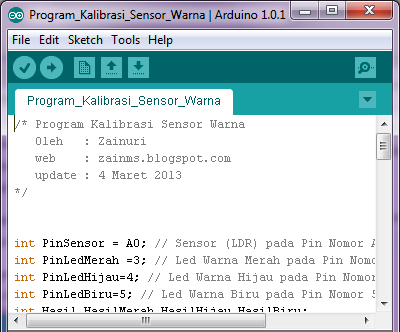
.png)
The vagueness of voltage changes is processed through fuzzy logic controller to control the duty cycle of PWM so the output voltage will be found constantly at 14.0 V at maximum power point and the load that is used is a 12 V 7.2 Ah Lead-Acid Battery. The change of voltage and current from photovoltaic module is depend on the environment condition (irradiance and temperature) and load that connected at the moment. An Op-Amp is needed to help simplifying the circuit in reading some feedbacks. A150 WP photovoltaic panel is used in this experiment, where the regulated voltage is produced by a MOSFET that is controlled with Arduino. An MPPT has been designed, which consisting of single inverting type of buck-boost converter to control the duty cycle of the pulse width modulation signal generated by and based on the algorithm of fuzzy logic controller where feedbacks were taken from a voltage sensor and a current sensor.
#SOURCE CODE FUZZY LOGIC ARDUINO SOFTWARE#
Sugeno system (output variables are functions or singleton/constant, more suitable for implementing on microcontrollers)Ĭompariosn between Sugeno and Mamdani system.The Fuzzy logic method is used in Arduino to optimize the performance of the photovoltaic maximum power point tracker since the Arduino is flexible and powerful software as well. Mamdani system (linguistic output variables, defuzzification can be complex) There are several fuzzy systems available for us to use: Predictions is what makes fuzzy logic very useful when mathematical connections between variables cannot be determined numerically or algebraically. Single output value can then be used in further processing. This process is also called sharpening of output value. In the third stage, defuzzification, we can combine all the levels of affiliation to only one value. This numbers cannot be used as they sits. There can be many different shapes of membership functions: trapeze, triangle, Gauss,… In prediction stage we are using pre-determined set of rules (those are set by designer) to predict what the output can be or to which membership function output variable affiliate whit what level. Fuzzification is process with which we calculate affiliation of input variable to a certain fuzzy populace or membership function. There are three stages in fuzzy logic: fuzzification, prediction and defuzzification. But what if we could reach any value between 1 and 0? Yes my friends, fuzzy logic can do just that! So solution to our problem with digital logic can provide us only with border values.

So there are only two values: in the area (comfortable) or outside of certain area (uncomfortable). Variables in digital (Boolean) logic can be TRUTH or FALSE or “1” and “0” respectively. Note: Instructable is not meant for beginners but for intermediate and advanced users.įor beginning I have to write something about fuzzy logic. End result will be soft sensor of atmospheric comfort. This Instructable can be used as short introduction into fuzzy logic and it shows that artificial intelligence is not necessarily something to avoid or be feared of. Because we do not poses tons of data, we’ll be implementing soft sensor using fuzzy logic. Since we want to use artificial intelligence, we have two plausible solutions in our case: using fuzzy logic or using neural networks. Soft sensor can be any sensor that can indirectly measure certain value. There is simpler solution: artificial intelligence. Believe me, you don’t want to go that way, since modeling is pain in the ass! But how can we automate this process? We could use mathematical model to calculate it. But how can we measure comfort? We can measure temperature and relative humidity and then we predict comfort. Now we are determined to control atmospheric comfort. Atmospheric comfort is defined with temperature and relative humidity - temperature ranges from 20☌ to 25☌ and relative humidity is around 50%, and it varies across the globe. One of many things to control in smart home is atmospheric comfort. What bothers me is that most provided solutions are not offering intelligent solutions. More and more open source home automation projects are appearing online.


 0 kommentar(er)
0 kommentar(er)
